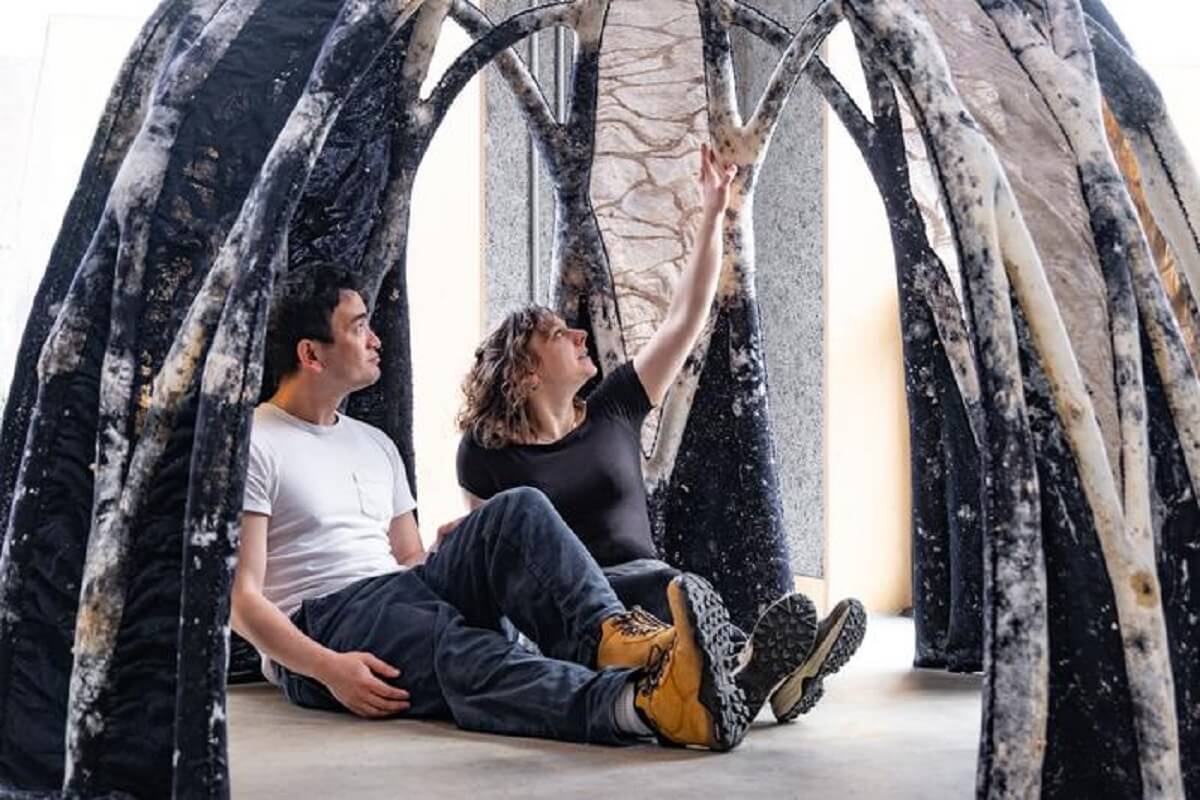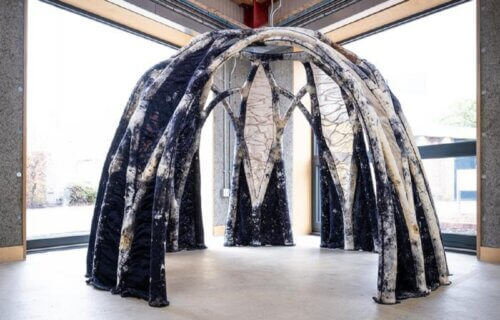NEWCASTLE UPON TYNE, United Kingdom — No, this isn’t a fairy tale or a video game like Minecraft, you may actually be able to live in a giant mushroom one day! Scientists have developed a building material using fungus to create an eco-friendly alternative to traditional construction supplies. The research aims to reduce the environmental impact of the industry by growing building materials using knitted molds and the root network of fungi.
The process involves using the mycelium before it produces mushrooms, making it stronger and more flexible for building applications. By injecting mycelium into a knitted textile framework, a composite material called mycocrete is formed, offering superior strength and shape possibilities compared to previous biomaterials made from fungi.
“Our ambition is to transform the look, feel, and well-being of architectural spaces using mycelium in combination with biobased materials such as wool, sawdust, and cellulose,” says Dr. Jane Scott of Newcastle University, part of the Living Textiles Research Group, in a media release.

To create the mycocrete composite, mycelium spores are mixed with grains as a food source and other materials, packed into molds, and grown in a dark, humid, and warm environment. Once it reaches the desired density, the mycelium is dried, resulting in a cheap and sustainable alternative to foam, timber, and plastic.
Using knitted molds as a flexible framework, the scientists achieved a breakthrough by enabling oxygen to reach the growing mycelium, which had previously constrained its size and shape. Knitted textiles provide a solution as they offer oxygen-permeable molds that can change from flexible to stiff as the mycelium grows. The 3D manufacturing system of knitting, with no seams and no waste, proved highly advantageous for this purpose.
Samples of the new mycocrete composite were tested alongside conventional mycelium composites and exhibited higher strength and more consistent manufacturing results. This groundbreaking research could revolutionize construction practices by providing a sustainable and efficient building material with a lower environmental impact.
The researchers emphasize the potential for adapting this formulation for various applications, including the creation of biofabricated architecture. As the project advances, new machine technology may be required to integrate textiles into the construction sector, paving the way for a future where buildings could be constructed using mycelium-based materials.
South West News Service writer Dean Murray contributed to this report.

